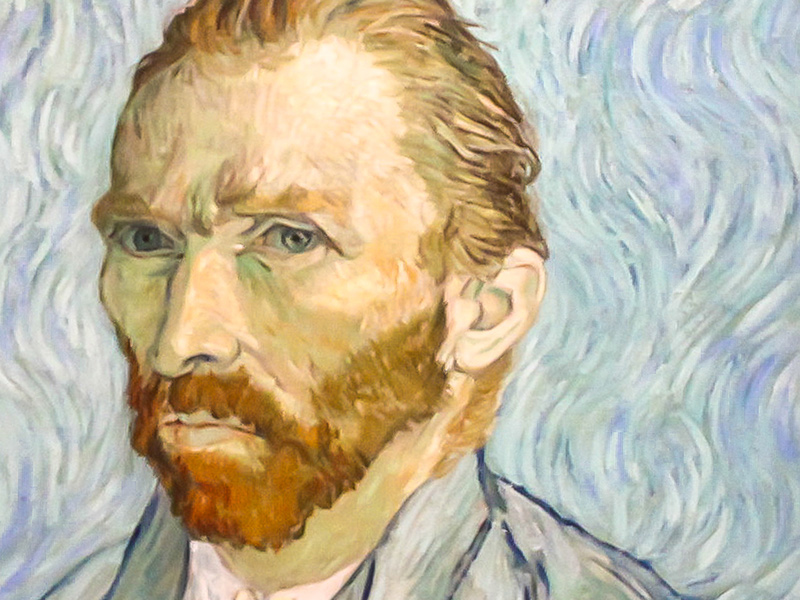
Robert Draws – Vincent van Gogh: The Visionary Artist who transformed the art world, remains one of the most iconic painters in history. Despite his work gaining fame only after his death, his bold and emotional artistry has left an indelible mark. Interested in learning about his biography and famous works? Let’s dive in!
Vincent van Gogh was born in Zundert, the Netherlands, in 1853. Raised in a middle-class family, he displayed a serious and introverted personality from a young age. As an adult, he worked as an art dealer and frequently traveled, but his move to London marked the onset of depression.
In 1881, Van Gogh’s deteriorating health led him to return to his parents’ home, where he began painting. He embraced Post-Impressionism, a movement that flourished in France between 1886 and 1905. Unlike Impressionism, which often used bright colors, Post-Impressionism allowed Van Gogh to explore deeper emotions and symbolic meanings in his work.
“Read about: Maudy Ayunda Enchants Fans with Ethereal Look in New Music Video’
Van Gogh’s contributions to art history include some of the most celebrated paintings ever created. Here are his most iconic masterpieces:
Before creating this masterpiece, Van Gogh faced severe mental health challenges, famously cutting off part of his left ear in 1888. Following this event, he admitted himself to the Saint-Paul-de-Mausole asylum in Saint-Rémy-de-Provence, where he painted Starry Night.
The swirling skies and glowing stars in this painting were inspired by the view outside his room at the asylum. His dynamic brushstrokes and vivid blues capture intense emotion, making it one of the defining works of Post-Impressionism. Today, you can see Starry Night at the Museum of Modern Art (MoMA) in New York City or even recreate it with the Lego Ideas Vincent van Gogh – The Starry Night set.
“Read more: Yos Suprapto’s Art Journey: 3 Paintings Sold, 34 More to Be Displayed”
During his stay in Arles, in southern France, Van Gogh painted a series of five Sunflowers. These paintings, composed almost entirely of yellow tones with hints of green, reflect his appreciation for simplicity and gratitude.
Van Gogh gifted one of these paintings to his friend and fellow artist Paul Gauguin, who admired the series. Today, several versions of the Sunflowers are displayed in museums, including the Van Gogh Museum in Amsterdam.
Van Gogh painted over 35 self-portraits throughout his career, with one of the most renowned completed in 1889. This particular work showcases Van Gogh in a blue jacket and white shirt, set against a soft blue-gray background.
He meticulously detailed his sharp features, forehead wrinkles, and reddish hair. Painted just before his death in 1890, this portrait is housed at the Musée d’Orsay in Paris.
This early work reflects Van Gogh’s desire to depict the lives of ordinary people. The Potato Eaters portrays a family of peasants sharing a modest meal of potatoes.
The painting’s earthy tones and chiaroscuro technique emphasize the realism of its subjects. It represents a pivotal moment in Van Gogh’s artistic development. This significant piece is exhibited at the Van Gogh Museum in Amsterdam.
Painted during the last weeks of Van Gogh’s life, Wheatfield with Crows conveys a haunting sense of isolation. The golden wheatfield, dark blue skies, and crows in flight evoke feelings of loneliness and uncertainty.
Many art historians interpret the painting as a reflection of Van Gogh’s inner turmoil and his contemplation of mortality. This evocative work is also displayed at the Van Gogh Museum.
Created during his stay at the asylum, Irises features the vibrant flowers growing in the garden there. Influenced by Japanese ukiyo-e prints, Van Gogh focused on the elegance of the flowers’ forms and colors.
This series highlights his ability to combine natural beauty with emotional depth, cementing its place among his most admired works.
This charming painting depicts Van Gogh’s simple bedroom in Arles. The vivid colors and bold lines reflect his admiration for Japanese woodblock prints.
Van Gogh described this painting in a letter to his brother Theo, expressing that its purpose was to bring peace and rest to the viewer. Today, The Bedroom remains one of his most beloved works.
Van Gogh’s legacy endures, celebrated not only for his innovative techniques and visionary style but also for the raw emotions that resonate through his art. To explore more about Vincent van Gogh: The Visionary Artist, visit museums, or bring his brilliance home with special collections like Lego’s The Starry Night.